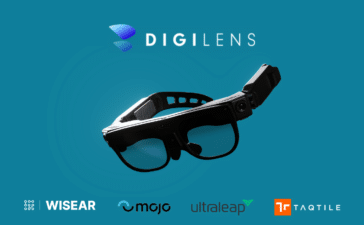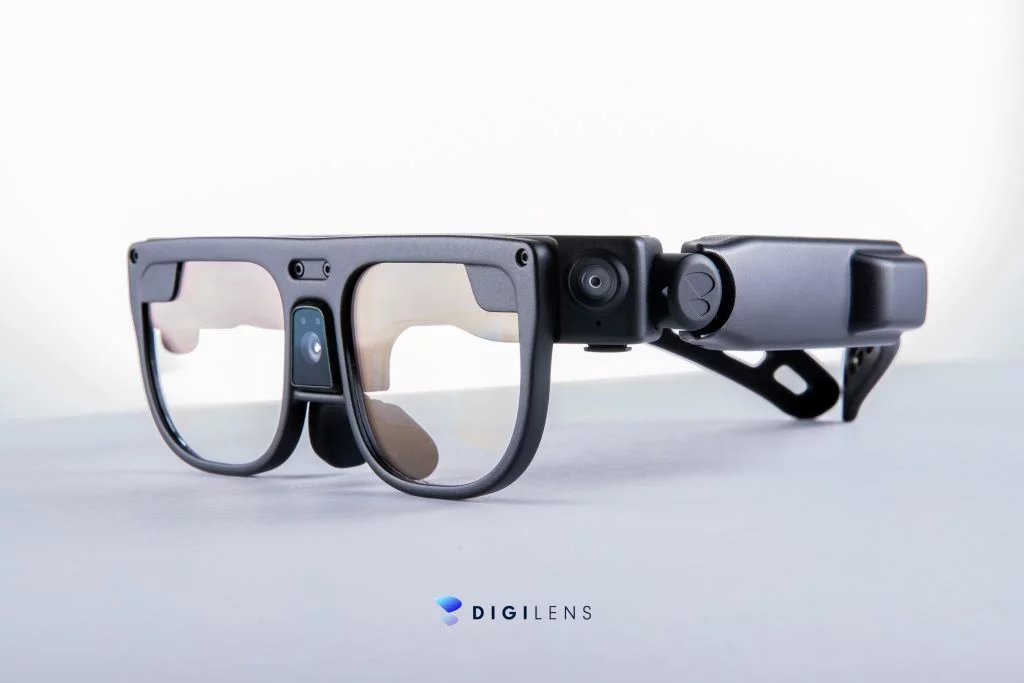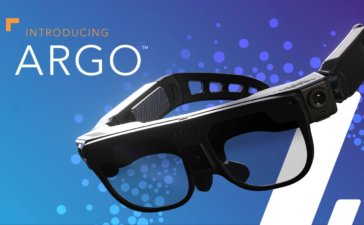AWE USA 2023 Day One: XR, AI, Metaverse, and More
AWE USA 2023 saw a blossoming industry defending itself from negative press and a perceived rivalry with other emerging technologies. Fortunately, Day One also brought big announcements, great discussions, and a little help from AI itself.
Ori Inbar’s Welcome Address
Historically, AWE has started with an address from founder Ori Inbar. This time, it started with an address from a hologram of Ori Inbar appearing on an ARHT display.
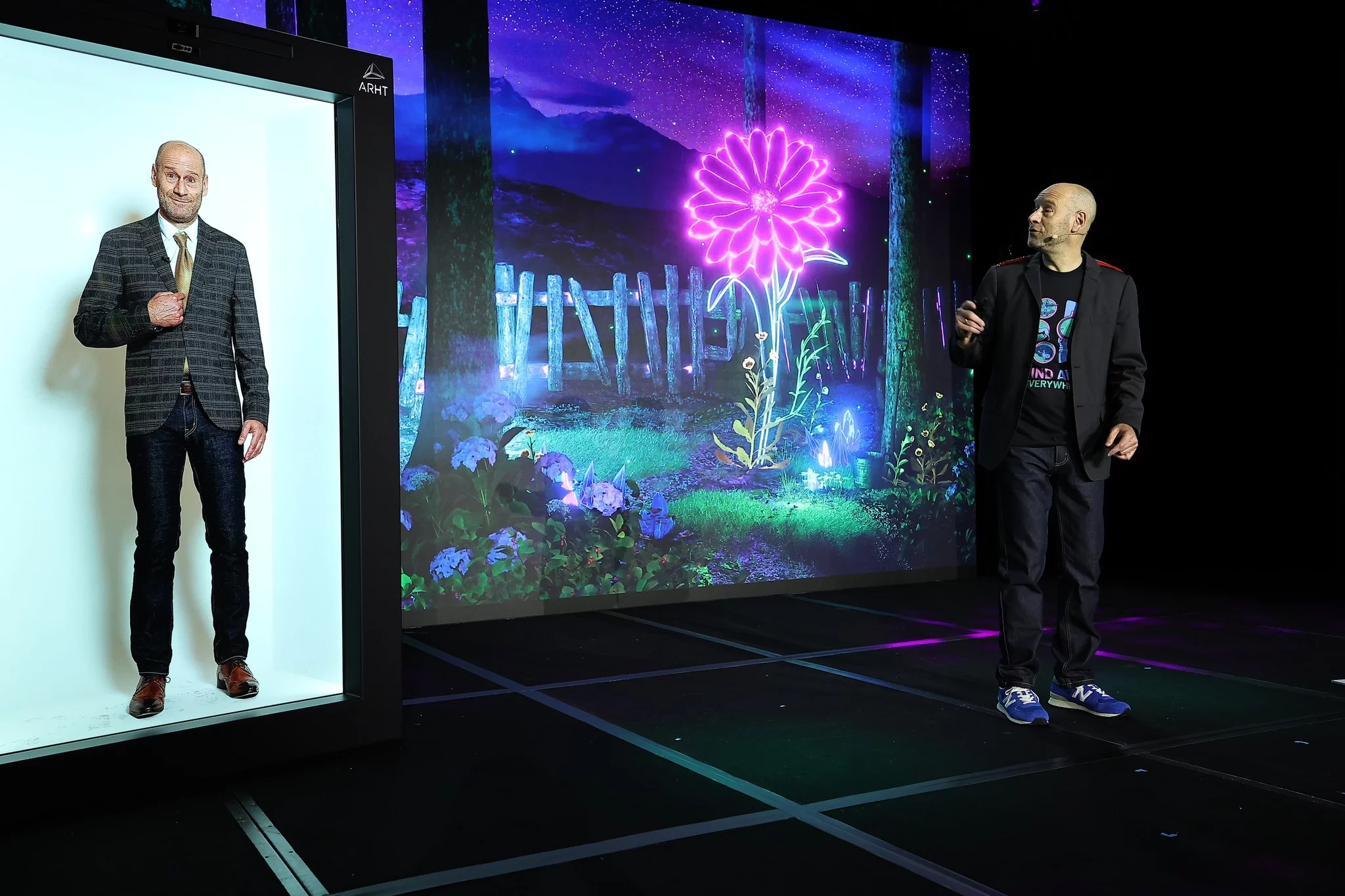
The hologram waxed on for a few minutes about progress in the industry and XR’s incredible journey. Then the human Ori Inbar appeared and told the audience that everything that the hologram said was written by ChatGPT.
While (the real) Inbar quipped that he uses artificial intelligence to show him how not to talk, he addressed recent media claims that AI is taking attention and funding away from XR. He has a different view.
it’s ON !!!
Ori Inbar just started his opening key note at #AWE2023
Holo-Ori was here thanks to our friends from @arht_tech.@como pic.twitter.com/Do23hjIkST
— AWE (@ARealityEvent) May 31, 2023
“We industry insiders know this is not exactly true … AI is a good thing for XR. AI accelerates XR,” said Inbar. “XR is the interface for AI … our interactions [with AI] will become a lot less about text and prompts and a lot more about spatial context.”
“Metaverse, Shmetaverse” Returns With a Very Special Guest
Inbar has always been bullish on XR. He has been skeptical of the metaverse.
At the end of his welcome address last year, Inbar praised himself for not saying “the M word” a single time. The year before that, he opened the conference with a joke game show called “Metaverse, Shmetaverse.” Attendees this year were curious to see Inbar share the stage with a special guest: Neal Stephenson.

Stephenson’s 1992 book, Snow Crash, introduced the world to the word “metaverse” – though Stephenson said that he wasn’t the first one to imagine the concept. He also addressed the common concern that the term for shared virtual spaces came from a dystopian novel.
“The metaverse described in Snow Crash was my best guess about what spatial computing as a mass medium might look like,” said Stephenson. “The metaverse itself is neither dystopian nor utopian.”
Stephenson then commented that the last five years or so have seen the emergence of the core technologies necessary to create the metaverse, though it still suffers from a lack of compelling content. That’s something that his company, Lamina1, hopes to address through a blockchain-based system for rewarding creators.
“There have to be experiences in the metaverse that are worth having,” said Stephenson. “For me, there’s a kind of glaring and frustrating lack of support for the people who make those experiences.”
AWE 2023 Keynotes and Follow-Ups
Both Day One and Day Two of AWE start out with blocks of keynotes on the main stage. On Day One, following Inbar’s welcome address and conversation with Stephenson, we heard from Qualcomm and XREAL (formerly Nreal). Both talks kicked off themes that would be taken up in other sessions throughout the day.
Qualcomm
From the main stage, Qualcomm Vice President and General Manager of XR, Hugo Swart, presented “Accelerating the XR Ecosystem: The Future Is Open.” He commented on the challenge of developing AR headsets, but mentioned the half-dozen or so Qualcomm-enabled headsets released in the last year, including the Lenovo ThinkReality VRX announced Tuesday.
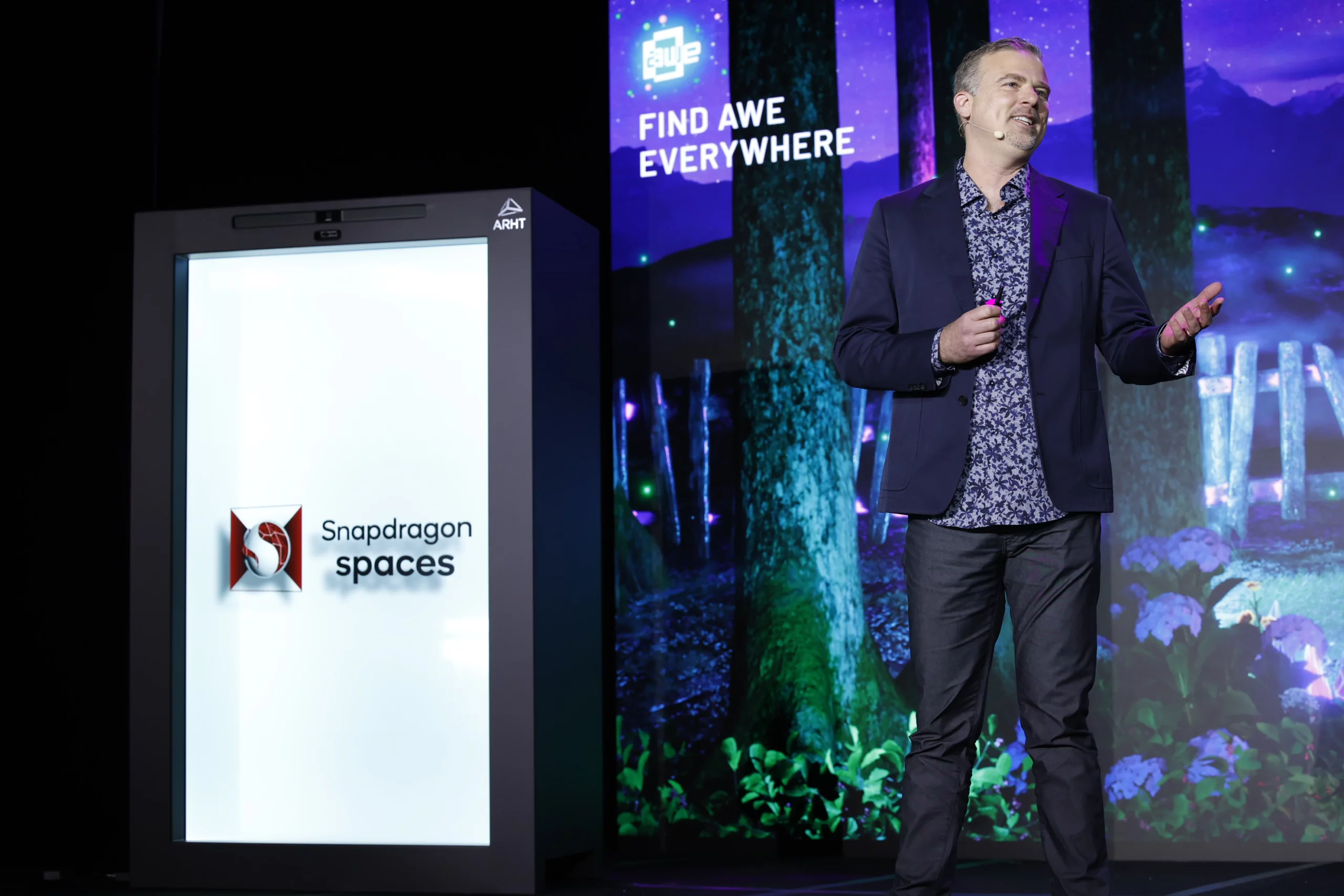
Swart was joined on the stage by OPPO Director of XR Technology, Yi Xu, who announced a new Qualcomm-powered MR headset that would become available as a developer edition in the second half of this year.
As exciting as those announcements were, it was a software announcement that really made a stir. It’s a new Snapdragon Spaces tool called “Dual Render Fusion.”
“We have been working very hard to reimagine smartphone XR when used with AR glasses,” said Swart. “The idea is that mobile developers designing apps for 2D expand those apps to world-scale apps without any knowledge of XR.”
Keeping the Conversation Going
Another talk, “XR’s Inflection Point” presented by Qualcomm Director of Product Management Steve Lukas, provided a deeper dive into Dual Render Fusion. The tool allows an experience to use a mobile phone camera and a headworn device’s camera simultaneously. Existing app development tools hadn’t allowed this because (until now) it didn’t make sense.

“To increase XR’s adoption curve, we must first flatten its learning curve, and that’s what Qualcomm just did,” said Lukas. “We’re not ready to give up on mobile phones so why don’t we stop talking about how to replace them and start talking about how to leverage them?”
A panel discussion, “Creating a New Reality With Snapdragon Today” moderated by Qualcomm Senior Director of Product Management XR Said Bakadir, brought together Xu, Lenovo General Manager of XR and Metaverse Vishal Shah, and DigiLens Vice President of Sales and Marketing Brian Hamilton. They largely addressed the need to rethink AR content and delivery.

“When I talk to the developers, they say, ‘Well there’s no hardware.’ When I talk to the hardware guys, they say, ‘There’s no content.’ And we’re kind of stuck in that space,” said Bakadir.
Hamilton and Shah both said, in their own words, that Qualcomm is creating “an all-in-one platform” and “an end-to-end solution” that solves the content/delivery dilemma that Bakadir opened with.
XREAL
In case you blinked and missed it, Nreal is now XREAL. According to a release shared with ARPost, the name change had to do with “disputes regarding the Nreal mark” (probably how similar it was to “Unreal”). But, “the disputes were solved amicably.”
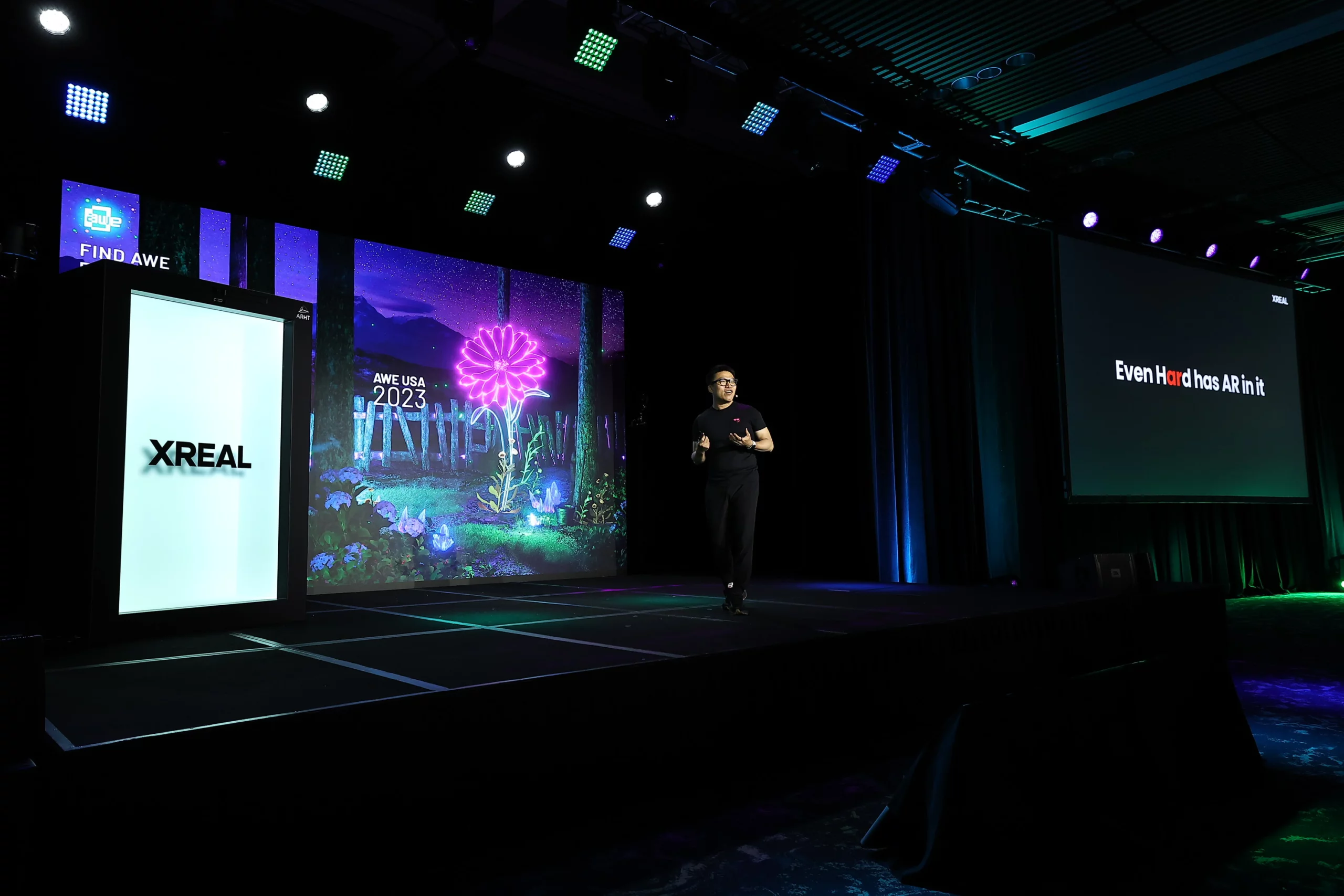
The only change is the name – the hardware and software are still the hardware and software that we know and love. So, when CEO Chi Xu took the stage to present “Unleashing the Potential of Consumer AR” he just focused on progress.
From one angle, that progress looks like a version of XREAL’s AR operating system for Steam Deck, which Xu said is “coming soon.” From another angle, it looked like the partnership with Sightful which recently resulted in “Spacetop” – the world’s first AR laptop.
XREAL also announced Beam, a controller and compute box that can connect wirelessly or via hard connection to XREAL glasses specifically for streaming media. Beam also allows comfort and usability settings for the virtual screen that aren’t currently supported by the company’s current console and app integrations. Xu called it “the best TV innovation since TV.”
AI and XR
A number of panels and talks also picked up on Inbar’s theme of AI and XR. And they all (as far as I saw) unanimously agreed with Inbar’s assessment that there is no actual competition between the two technologies.
The most in-depth discussion on the topic was “The Intersection of AI and XR” a panel discussion between XR ethicist Kent Bye, Lamina1 CPO Tony Parisi, HTC Global VP of Corporate Development Alvin Graylin, and moderated by WXR Fund Managing Partner Amy LaMeyer.

“There’s this myth that AI is here so now XR’s dead, but it’s the complete opposite,” said Graylin. Graylin pointed out that most forms of tracking and input as well as approaches to scene understanding are all driven by AI. “AI has been part of XR for a long time.”
While they all agreed that AI is a part of XR, the group disagreed on the extent to which AI could take over content creation.
“A lot of people think AI is the solution to all of their content creation and authoring needs in XR, but that’s not the whole equation,” said Parisi.
Graylin countered that AI will increasingly be able to replace human developers. Bye in particular was vocal that we should be reluctant and suspicious of handing over too much creative power to AI in the first place.
“The differentiating factor is going to be storytelling,” said Bye. “I’m seeing a lot of XR theater that has live actors doing things that AI could never do.”
Web3, WebXR, and the Metaverse
The conversation is still continuing regarding the relationship between the metaverse and Web3. With both the metaverse and Web3 focusing on the ideas of openness and interoperability, WebXR has become a common ground between the two. WebXR is also the most accessible from a hardware perspective.
“VR headsets will remain a niche tech like game consoles: some people will have them and use them and swear by them and won’t be able to live without them, but not everyone will have one,” Nokia Head of Trends and Innovation Scouting, Leslie Shannon, said in her talk “What Problem Does the Metaverse Solve?”
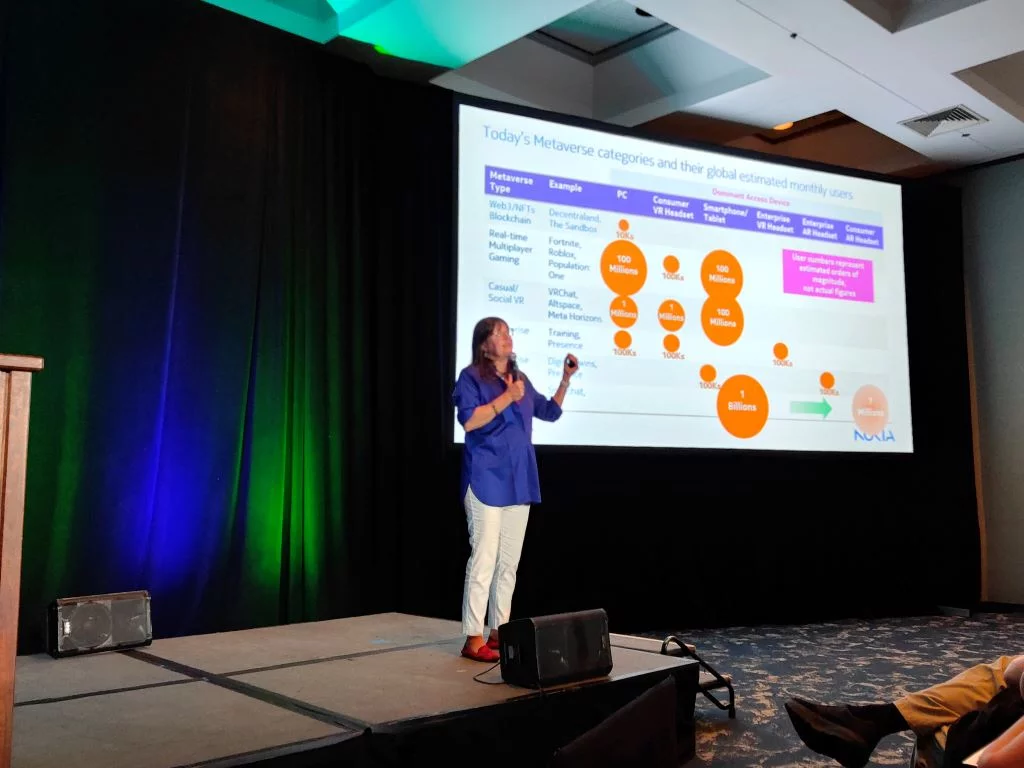
“The majority of metaverse experiences are happening on mobile phones,” said Shannon. “Presence is more important than immersion.”
Wonderland Engine CEO Jonathan Hale asked “Will WebXR Replace Native XR” with The Fitness Resort COO Lydia Berry. Berry commented that the availability of WebXR across devices helps developers make their content accessible as well as discoverable.

“The adoption challenges around glasses are there. We’re still in the really early adoption phase,” said Berry. “We need as many headsets out there as possible.”
Hale also added that WebXR is being taken more seriously as a delivery method by hardware manufacturers who were previously mainly interested in pursuing native apps.
“More and more interest is coming from hardware manufacturers every day,” said Hale. “We just announced that we’re working with Qualcomm to bring Wonderland Engine to Snapdragon Spaces.”
Keep Coming Back
AWE Day One was a riot but there’s a lot more where that came from. Day Two kicks off with keynotes by Magic Leap and Niantic, there are more talks, more panels, more AI, and the Expo Floor opens up for demos. We’ll see you tomorrow.
AWE USA 2023 Day One: XR, AI, Metaverse, and More Read More »

